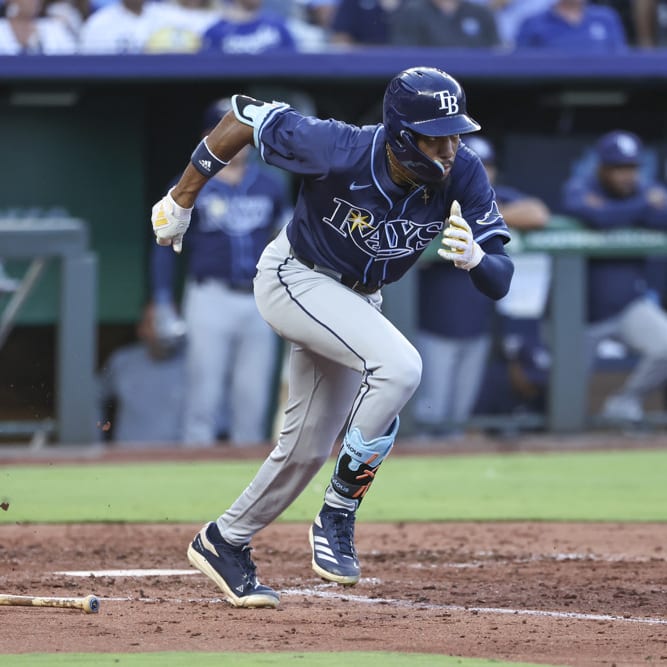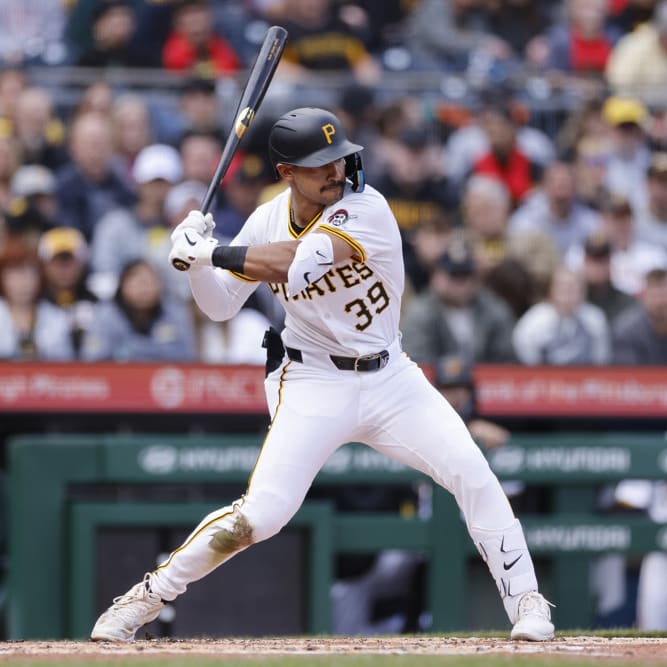This article is part of our Stathead Sagas series.
For most fantasy baseball leagues, the trade deadline is coming up on August 19th. For many, that date marks the last time owners can grab an impact player.
In categorical leagues, we have two types of stats: totals (R, HR, RBI, etc.) and rates (AVG, ERA, WHIP). However, in most daily rotisserie leagues, there's an innings cap and a games played cap – 162 games per position and 1,400 innings in the standard Yahoo! game, for example. In effect, this turns every stat into a rate – instead of runs, it's runs per game, etc.
So, there are a couple of questions to ask at the deadline. With less than a third of the season left to go, how much will our rates actually change down the stretch? And how much can one player actually change those rates? For the purpose of this exercise, I'm going to take a look at the WHIP stat – the analysis applies to the other categories as well, it's just a matter of scale.
At this point in the season, most teams will be slightly under 70% of the way to their innings total – roughly 950 innings thrown out of 1400 for the standard league. Let's take a look at how much certain performances for those last 450 innings impact teams at certain marks through their first 950:
The horizontal axis shows the team's WHIP today, with the vertical axis showing the difference in WHIP based on a
For most fantasy baseball leagues, the trade deadline is coming up on August 19th. For many, that date marks the last time owners can grab an impact player.
In categorical leagues, we have two types of stats: totals (R, HR, RBI, etc.) and rates (AVG, ERA, WHIP). However, in most daily rotisserie leagues, there's an innings cap and a games played cap – 162 games per position and 1,400 innings in the standard Yahoo! game, for example. In effect, this turns every stat into a rate – instead of runs, it's runs per game, etc.
So, there are a couple of questions to ask at the deadline. With less than a third of the season left to go, how much will our rates actually change down the stretch? And how much can one player actually change those rates? For the purpose of this exercise, I'm going to take a look at the WHIP stat – the analysis applies to the other categories as well, it's just a matter of scale.
At this point in the season, most teams will be slightly under 70% of the way to their innings total – roughly 950 innings thrown out of 1400 for the standard league. Let's take a look at how much certain performances for those last 450 innings impact teams at certain marks through their first 950:
The horizontal axis shows the team's WHIP today, with the vertical axis showing the difference in WHIP based on a rest-of-season WHIP, denoted by the boxes.
The most obvious conclusion: the worse a rate, the easier it is to improve it, and vice versa. If you've somehow managed a 1.00 WHIP to this point, you should be happy with maintaining it; similarly, it takes merely mediocre to improve on just plain bad.
What we're really interested in at the end of the day isn't the raw stats, though, it's the roto points they give at the end of the season. So, for reference, he are the WHIP standings for my five Yahoo Pro leagues -- all 12-team standard mixed leagues:
This gives us a couple of examples. Consider you're the player in League 2 with a 1.30 WHIP. Although you're in 11th, with a 2 in the category, there's a large bunch of players ahead of you. Just getting up to 1.25 would net 3.5 points, a potentially significant sum. According to the first chart, you'd need to put up a WHIP between 1.15 and 1.10 to do so.
But if you're the same guy in League 5, you'd need to put up a final-season WHIP of 1.22 for the same point increase. The first chart tells us you would need a 1.05 WHIP to pull that off, something not even the best team has come close to so far. Dealing specifically for WHIP in this situation would seem unwise.
Now, let's go back to that first situation and use it to answer the second part of the exercise: how much can one player really impact those rates? The team in League 2 still needs to get his rest-of-season WHIP down to 1.15 in order to make this charge, and that's something only seven of the 60 teams between all five leagues have done through the first two-thirds of the season. It's difficult enough to pull off with a solid, well-drafted staff; a team with a 1.30 WHIP in 950 innings doesn't seem primed to make that kind of run.
Let's say this team deals for Justin Verlander and his 0.99 WHIP. Verlander has either 9 or 10 starts remaining this season, so probably about 70 innings left. If he replicates his performance, that would bring the team's rest-of-season WHIP down from 1.30 to 1.25. Unfortunately, that would only bring the end of season WHIP down by 0.016, earning this owner just one point instead of the 3.5+ we're shooting for.
Maybe we can expect some regression out of his other pitchers. He has probably dropped the worst offenders, and Verlander would replace another one. Even with the trade, though, this owner would need a 1.18 rest-of-season WHIP out of his non-Verlander pitchers down the stretch – still in the top 20% of the 60 teams we've seen in this format.
The main lesson here? Even though there's plenty of season left, the impact that one player can make on rates is small. Justin Verlander, in most cases, is worth just one to two points in WHIP despite his league-best status in the category, and chances are you'll have to give up similar value in another category to get him. As great as Verlander his, he's only pitching a fraction of the season for the new team and even then only eating up another fraction of those remaining innings.
There are still teams that can gain from trades this late, but it has to be understood just how close you have to be to make these deals. This holds especially true in keeper leagues, where the value you give up for little can come back to haunt you next season. So act with care at the impending deadline – understand where and how to get value, and where you just have to bite the bullet.










